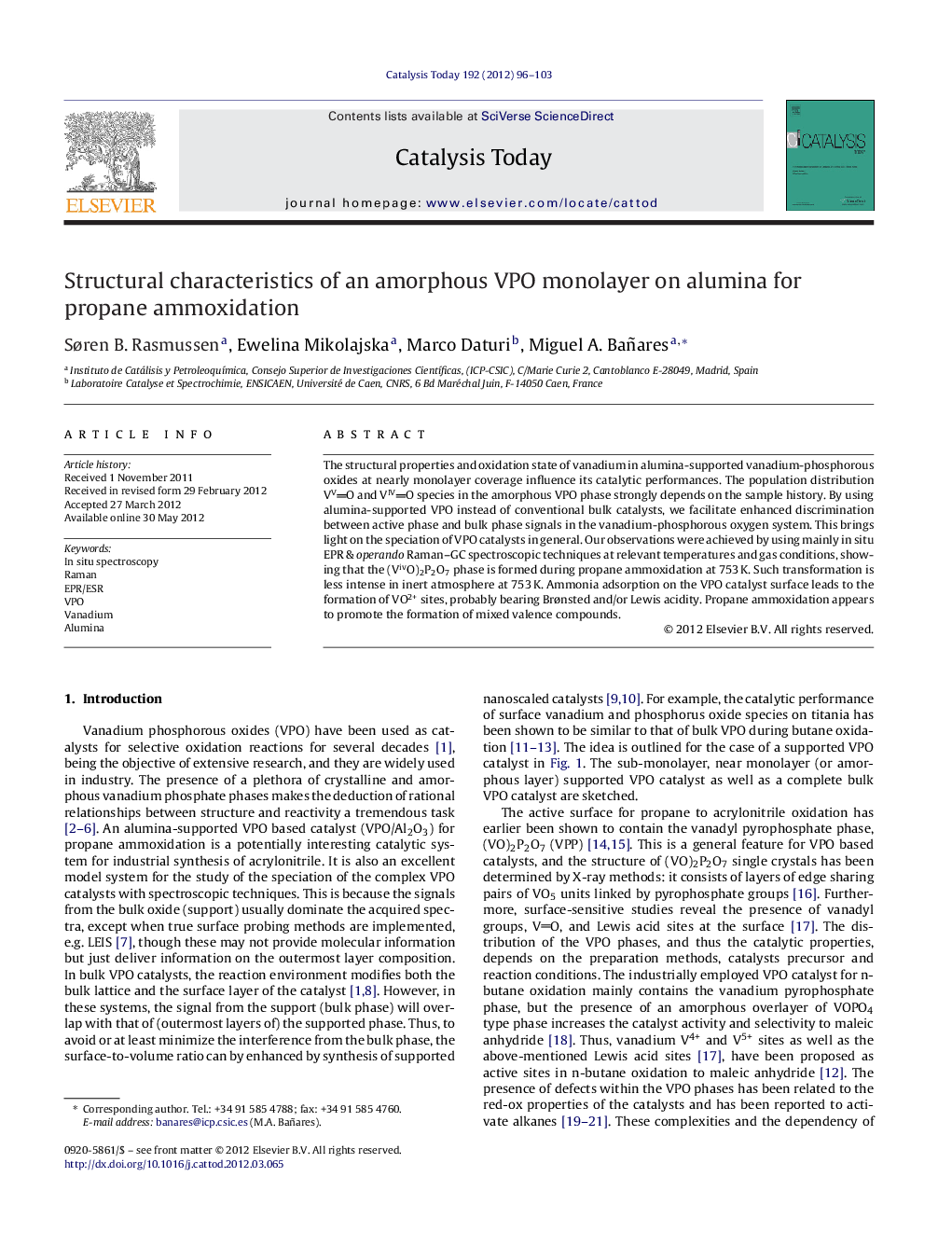| Article ID | Journal | Published Year | Pages | File Type |
|---|---|---|---|---|
| 55160 | Catalysis Today | 2012 | 8 Pages |
The structural properties and oxidation state of vanadium in alumina-supported vanadium-phosphorous oxides at nearly monolayer coverage influence its catalytic performances. The population distribution VVO and VIVO species in the amorphous VPO phase strongly depends on the sample history. By using alumina-supported VPO instead of conventional bulk catalysts, we facilitate enhanced discrimination between active phase and bulk phase signals in the vanadium-phosphorous oxygen system. This brings light on the speciation of VPO catalysts in general. Our observations were achieved by using mainly in situ EPR & operando Raman–GC spectroscopic techniques at relevant temperatures and gas conditions, showing that the (VivO)2P2O7 phase is formed during propane ammoxidation at 753 K. Such transformation is less intense in inert atmosphere at 753 K. Ammonia adsorption on the VPO catalyst surface leads to the formation of VO2+ sites, probably bearing Brønsted and/or Lewis acidity. Propane ammoxidation appears to promote the formation of mixed valence compounds.
Graphical abstractFigure optionsDownload full-size imageDownload high-quality image (99 K)Download as PowerPoint slideHighlights► A supported VPO phase without bulk vanadium phases exhibits excellent activities and selectivities towards ammoxidation of propane. ► The activity and even selectivity is influenced by the size of the catalyst particles. ► 8% of the vanadium in oxidation state 4 is present as monomeric VO2+ probably as surface defects, while the rest is present as the polymeric VPP phase. ► Pre-activation of the supported VPO catalyst leads fast settling of V(IV) ⇔ V(V) equilibrium as a slightly reduced catalyst compared to direct activation in ammoxidation gas.
